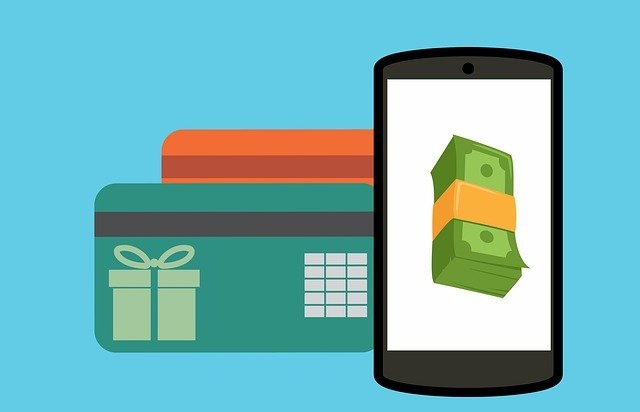In the past two decades, we’ve been observing a significant shift in how financial services are delivered. The Internet made it possible to make purchases and pay for them using a digital network. The use of e-payments has eased the shopping experience, but it has also caused challenges around data security and confidentiality. The growth in online payments has strengthened the necessity for a fast yet reliable and secure payment gateway platform.

Table of Contents
What Is a Payment Gateway?
If you sell online, digital payments are a part of the sales process while its execution is dependent on a payment gateway that helps customers and merchants transfer and accepts payments. Basically, a payment gateway is a technology platform that assists with authorizing a funds transfer between a customer’s credit card and a merchant’s bank account.
Payment Gateway Samples
Based on your e-commerce business size and goals, you can select from multiple gateway samples that typically include:
- Hosted payment gateways. This type implies redirecting customers to a third-party site to process payments, for example, PayPal.
- On-site checkout and off-site payment. According to this payment scenario, the checkout is processed on the e-commerce website, while the final payment is executed on another website such as Stripe.
- Custom on-site payment gateways. On-site payments are essentially used by larger e-commerce companies that are ready to process all the transactions through their servers. This type provides more opportunities for the customization of user experience, including the checkout page design, authorization, etc., but there’s also more responsibility on the merchant’s side.
Benefits of Using Payment Gateways in E-Commerce
Though each payment gateway brings a set of unique features for e-commerce, you need to consider a few common benefits associated with the integration of a payment gateway system.
- Improve real-time user experience. For customers, the payment gateway technology means adding products directly to a shopping cart and saving other items to their favourites. They can also set up a purchasing profile by saving their payment information to make instant purchases with a single click.
- Collect payments 24 hours a day. Through integrating a payment gateway platform into your e-commerce website may be costly, it allows you to accept payments within a 24-hour period. Online consumers are known for their impulse buying behavior, so speedy payments will make them not have to wait for making a purchase.
- Reach new customer markets. Applying a payment gateway will serve you to expand your customer base by reaching new markets, regardless of location. Online stores are attracting and retaining customers from all over the world, and due to the payment gateway technology, people are more willing to make online purchases.
- Secure payment transactions. Transactions made with a payment gateway are secured with advanced encryption, protecting both customers and merchants from fraud. Secure payment transactions allow you to meet industry-related standards such as GDPR, gaining customers’ trust in your business.
Payment Gateways Trends and Challenges
When integrating a payment gateway platform into your e-commerce website, you should recognize that if applied incorrectly, payment gateways can cause challenges associated with mishandled sensitive data and financial loss.
Challenges E-commerce Businesses May Face with Payment Gateways
The Rise of Cybercrimes
With the increasing popularity of digital payments in the e-commerce industry, payment gateways are targeted by cybercriminals. The fact of the matter is that payment gateway platforms store all the customers’ sensitive payment information, including their names, account credentials, credit card details, etc. Scammers can hack the system to access and steal the valuable database. Fraudsters can also affect the daily operation of payment gateways by causing technical problems. Thus, a payment gateway must be sustainable to challenge hackers’ attacks.
The Cost of Technical Issues
Keeping a payment gateway on track requires a strong infrastructure from payment gateway providers or e-commerce businesses that decide to perform all transactions on their side. Sometimes payment gateway servers undergo technical glitches due to unknown reasons, which needs time to troubleshoot the problems. As a result, the time it takes to recover the website’s payment processing capabilities can lead to the temporary loss of customers and potential revenues.
Trends in Payment Gateway
In spite of common challenges associated with payment gateway technology, there are specific trends that shape its future.
Mobile Payments Will Grow
Impacted by the pandemic, more people prefer mobile payments to pay with cash or credit cards due to their speed and convenience. The popularity of using smartphones for digital banking caused the expansion of mobile payments to other industries.
Mobile payments, also known as mobile wallets, are among the fastest-growing trends in the payment domain. Though mobile payments are easy-to-use, there are security challenges that e-commerce businesses and payment gateway providers will have to face while ensuring trust with payment processing using smartphones.
Demand for Contactless Payments Will Increase
With the increasing popularity of contactless payments, new payment technologies will evolve in the e-commerce market. Here are a couple of tech considerations:
- NFC contactless payments. Many countries are already accepting payments with electronic devices in the retail sector, and it’s expected that the number of devices allowing NFC contactless payments will expand in the future.
- Voice commerce. Smart retailers are already learning how to talk to their consumers, and it’s just a matter of time when voice commerce will be predominant in the e-commerce sector.
Security Will Matter Even More
As it has been mentioned above, the security of customers’ sensitive information still matters. Thus, in the near future, e-commerce companies need to employ innovative technologies to ensure the highest level of data protection. Below are several tech trends to employ:
- Biometric security is considered much safer than traditional security methods.
- A cloud-based infrastructure with a Single Point of Failure provides not only fast transactions but a deep level of security.
- Artificial Intelligence is now applied not only for improving customer experience but also for fraud prevention.
Conclusion
Custom e-commerce software development involves the integration of the payment gateway technology for payment transactions. Payment gateways make it possible to execute various digital payments to ensure a quick and easy shopping experience. By choosing an appropriate payment gateway type and providing a secure payment environment, e-commerce businesses can benefit from the technology to attract new clients and retain the current ones.




